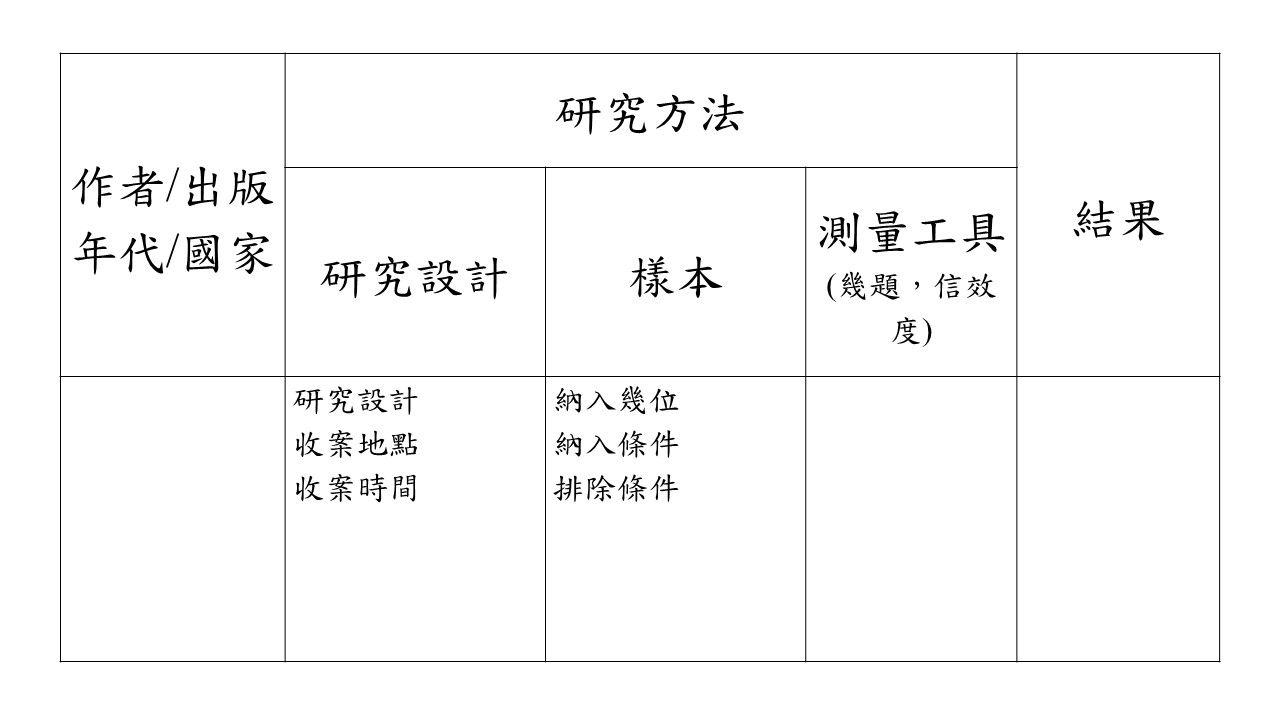How to Quickly Read a Research Article
Hello everyone, what I want to share with you this week is how to sort out the core of an article in a short period of time, but before talking about this topic, it is still necessary to be based on a framework.
Recently I just came across a book called "How to Read a Book". The author of this book used to be the person who wrote and edited the Encyclopaedia Britannica. Therefore, when reading this book, I always feel that it is easy to connect us when we encounter difficulties. Quickly organize English research literature into usable questions.

The book mentions that there are four levels in the reading hierarchy :
Basic reading: This part is as long as you can understand the meaning of each word; if you can't read it, you may have a language barrier.
If you use a simple concept, it is: " What is this sentence pieced together through a few English keywords? "
Inspectional reading: Find keywords in a short time, and grasp the key points that the author wants to express in this paragraph [this stage especially emphasizes time, about 15 minutes]
At this level, I am asking you what the book is mainly about? How is the structure? What parts are you talking about?
If it is appropriated to our field, it is to ask, what is the main purpose of this article? Through what research design, who are recruited, and what tools are used for measurement? What are the main research results?
Analytical reading: Refers to comprehensive reading. Reading at this level is mainly to transform the concepts and principles mentioned in the whole book into your own.
As far as I understand, it's like we are doing empirical translation. After understanding the evidence, we also need to understand how to integrate the translation into clinical application.
Thematic reading: Thematic reading is more complex and diverse than the first three levels, and it is not just a book, but the reader will read different books, list the correlations and differences between these books, and find the rules; but also The most rewarding of all reading activities.
If the method of how to read a book is transformed into how to read a research article, I think that if we want to achieve quick organization, we should probably reach the level of inspectional reading
Here, we will use "one form" and the following "three steps" to easily let everyone grasp the key points of an article.
Organize through the table, as follows

three steps
Collect information – first look at the topics listed in the article (title)
1. Look at the topic first: Disassemble the keywords from the topic to get a preliminary understanding of what the author wants to discuss. For example, the topic of an article is: "Sleep disturbance, associated symptoms, and quality of life in adults living with HIV in Jakarta, Indonesia "
- If you piece together the keywords, you can probably understand what this article should be about: The relationship between sleep disturbance, related symptoms and quality of life among HIV-infected people in Jakarta, Indonesia
2. Background of the author (especially the corresponding author)/country
- I will rekey the author's name in PubMed to find out if I have been deeply involved in the field of sleep and AIDS, and I can also learn about potential partners on this topic
- In addition, you can also record which country the recruiting target is in, because different races may also cause different effects
3. Journal/Year of Publication :
- I have roughly seen which journals are interested in such topics, so as long as I am writing about these topics, my mind will probably flash quickly. Those journals are the targets for future submissions.
- Record the publication year to roughly understand whether the information released in this document is recent information
Dismantling the facade-interpreting the research design and results in the abstract
1. Research Design (Methods) : See what research design the author uses to answer this question
- If divided by "time", there will be the following three types:
(1) Cross-sectional study design : investigation through a single time point
(2) Prospective research design : follow up for a period of time, and the time point is more than one time, which belongs to long-term follow-up
(3) Retrospective research design : follow up for a period of time, the most commonly used method is to analyze the data collected in the past, this part of the data may be the questionnaire data collected in the past or stored in the hospital system medical information
- If you use a randomized controlled trial research design, learn more about the method of randomization, such as computer random selection, lottery, coin toss, or random table, etc. (wait until the text to read in depth)
2. Inclusion and exclusion of ethnic groups (sampling)
This article included a total of several participants, where (Where), when (When) and what methods were used to recruit subjects
3. Measurement tools: For example: if you mainly look at sleep disturbances, associated symptoms and QoL, what are these three items measured?
§ Due to the word limit of the abstract, this part can be read in detail in the text
§ Example: In the abstract part of this article, it is written that a questionnaire with reliability and validity is used, more specifically
4. Main results: Is the relationship significant? How strong is the relationship?
§ For example, this article writes: When adjusting for sex, education, drug use, and compliance with antiviral drugs, it was found that the quality of life of HIV-infected patients was significantly negatively correlated with insomnia (After adjusting for sex, education, drug- use severity, and ART adherence, QoL was negatively associated with fatigue, insomnia, and pharmacological treatment with methadone.)
§ However, sometimes the abstract does not include statistics (relationship strength), and then go deeper into the text to see
Dig Deeper - Inside Text
oResearch design
§ sampling: Exclude conditions for cases not seen in the supplementary summary; if it is randomly assigned, check carefully to see if it is written how to assign; whether it is stated whether the number of cases has reached the statistical power (power) [at least greater than 0.80-0.85]
§ Measurement tools: how to score, the higher the score, the more severe or milder the symptoms, what is the reliability and validity?
oresults
§ Take a closer look at whether there is a relationship (positive or negative relationship) between these two items; is this relationship significant? Have you controlled other influencing factors?
***************************************************** ***********************************************
Therefore, from the above condensed points of view, two points can be summarized:
1. About 80% of the information can be understood by simply "understanding the abstract"
2. "Research design" is the core of reading articles
***************************************************** ***********************************************
It doesn’t matter if you don’t know it at the beginning, but when you read the article every time you use a structured way to sort out what you see, it will become your knowledge material over time. where will be.
The above is just a brief sharing of my own method, I hope it will be helpful for you to read the article~
Like my work? Don't forget to support and clap, let me know that you are with me on the road of creation. Keep this enthusiasm together!
